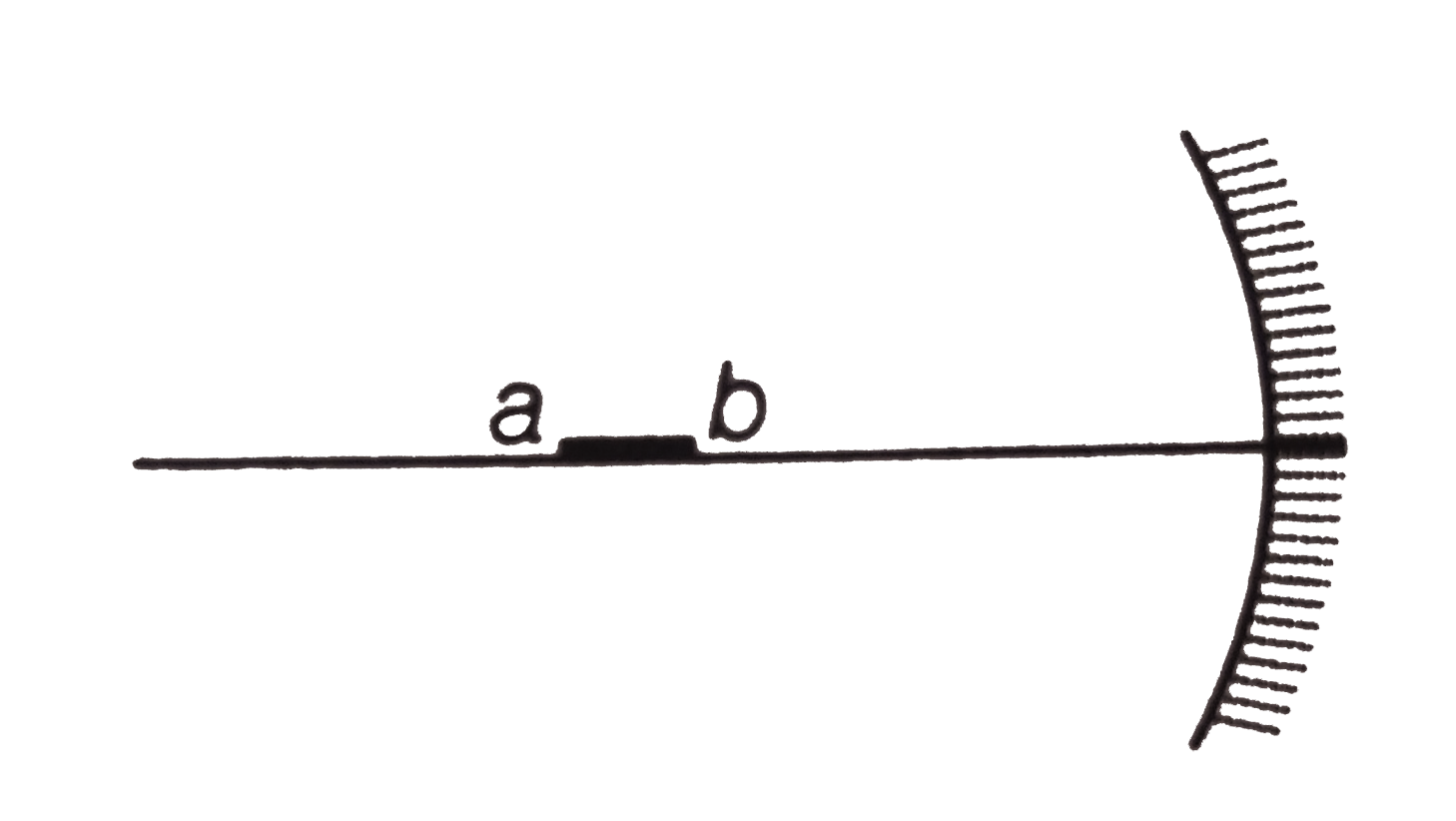When an object of height 1 cm its kept at a distance 4 cm from a concave mirror, its erect image of height 1.5 cm is formed at a distance 6 cm behind the mirror. Find the focal length of mirror.
The correct Answer is:12 cm
To find the focal length of the concave mirror, we will use the mirror formula and the given data. Let's break down the solution step by step.
Step 1: Identify the given values
- Height of the object (h_o) = 1 cm
- Height of the image (h_i) = 1.5 cm
- Object distance (u) = -4 cm (negative because the object is in front of the mirror)
- Image distance (v) = +6 cm (positive because the image is formed behind the mirror)
Step 2: Use the mirror formula
The mirror formula is given by:
1f=1v+1u
Where:
- f = focal length of the mirror
- u = object distance
- v = image distance
Step 3: Substitute the values into the mirror formula
Substituting the values of u and v into the formula:
1f=16+1−4
Step 4: Calculate the right-hand side
To add the fractions, we need a common denominator. The least common multiple of 6 and 4 is 12:
16=212and1−4=−312
Now, substituting these values:
1f=212−312=−112
Step 5: Solve for f
Taking the reciprocal to find f:
f=−12 cm
Conclusion
The focal length of the concave mirror is:
f=−12 cm
- Height of the object (h_o) = 1 cm
- Height of the image (h_i) = 1.5 cm
- Object distance (u) = -4 cm (negative because the object is in front of the mirror)
- Image distance (v) = +6 cm (positive because the image is formed behind the mirror)
The mirror formula is given by:
1f=1v+1u
Where:
- f = focal length of the mirror
- u = object distance
- v = image distance
Substituting the values of u and v into the formula:
1f=16+1−4
To add the fractions, we need a common denominator. The least common multiple of 6 and 4 is 12:
16=212and1−4=−312
Now, substituting these values:
1f=212−312=−112
Taking the reciprocal to find f:
f=−12 cm
The focal length of the concave mirror is:
f=−12 cm
Topper's Solved these Questions
- REFLECTION OF LIGHTBOOK - ICSECHAPTER - REFLECTION OF LIGHTEXERCISE - EXERCISE 7(B)
9 Videos
- PROPAGATION OF SOUND WAVES BOOK - ICSECHAPTER - PROPAGATION OF SOUND WAVES EXERCISE - EXERCISE -8(B) (Multiple choice type)
3 Videos
- SOUNDBOOK - ICSECHAPTER - SOUNDEXERCISE - TOPIC 2 Infrasonic and Ultrasonic Waves ( 3 Marks Questions)
3 Videos
Similar Questions
An object is placed at a distance of 30 cm from a concave mirror and its real image is formed at a distance of 30 cm from the mirror. The focal length of the mirror is
View SolutionAn object of height 5 cm is placed 20 cm away from a convex mirror. Its image is formed at a distance of 12 cm behind the mirror. Calculate the focal length of the mirror using mirror formula. Also draw a scale diagram to locate the image. From the diagram, find out the length of the image formed.
View SolutionA convex mirror forms the image of an object placed at a distance 40 cm in front of mirror, at distance 10 cm Find the focal length of mirror.
View SolutionA concave mirror forms a virtual image of size twice that of the object placed at a distance 5 cm from it . Find the focal length of the mirror.
View SolutionAn object is placed at a distance of 20 cm from a concave mirror of focal lenght 10 cm. What is the image distance?
View SolutionAn object is placed in front of a concave mirror at a distance of 7.5 cm from it. If the real image is formed at a distance of 30 cm from the mirror, find the focal length of the mirror. What would be the focal length if the image is virtual.
View Solution
A small object ab of size 1mm is kept at a distance of 40 cm form a concave mirror of focal length 30 cm. Make image of this object.
View SolutionWhen an object is kept at a distance of 30cm from a concave mirror, the image is formed at a distance of 10 cm. if the object is moved with a speed of 9 cm/s, find the speed (in cm/s) with which image moves.
View SolutionFor an object placed at a distance 20 cm from a concave mirror, the image is formed at the same position. What is the focal length of the mirror?
View SolutionWhen an object is kept at a distance of 30cm from a concave mirror, the image is formed at a distance of 10 cm. If the object is moved with a speed of 9cms−1 the speed with which the image moves is
View Solution
